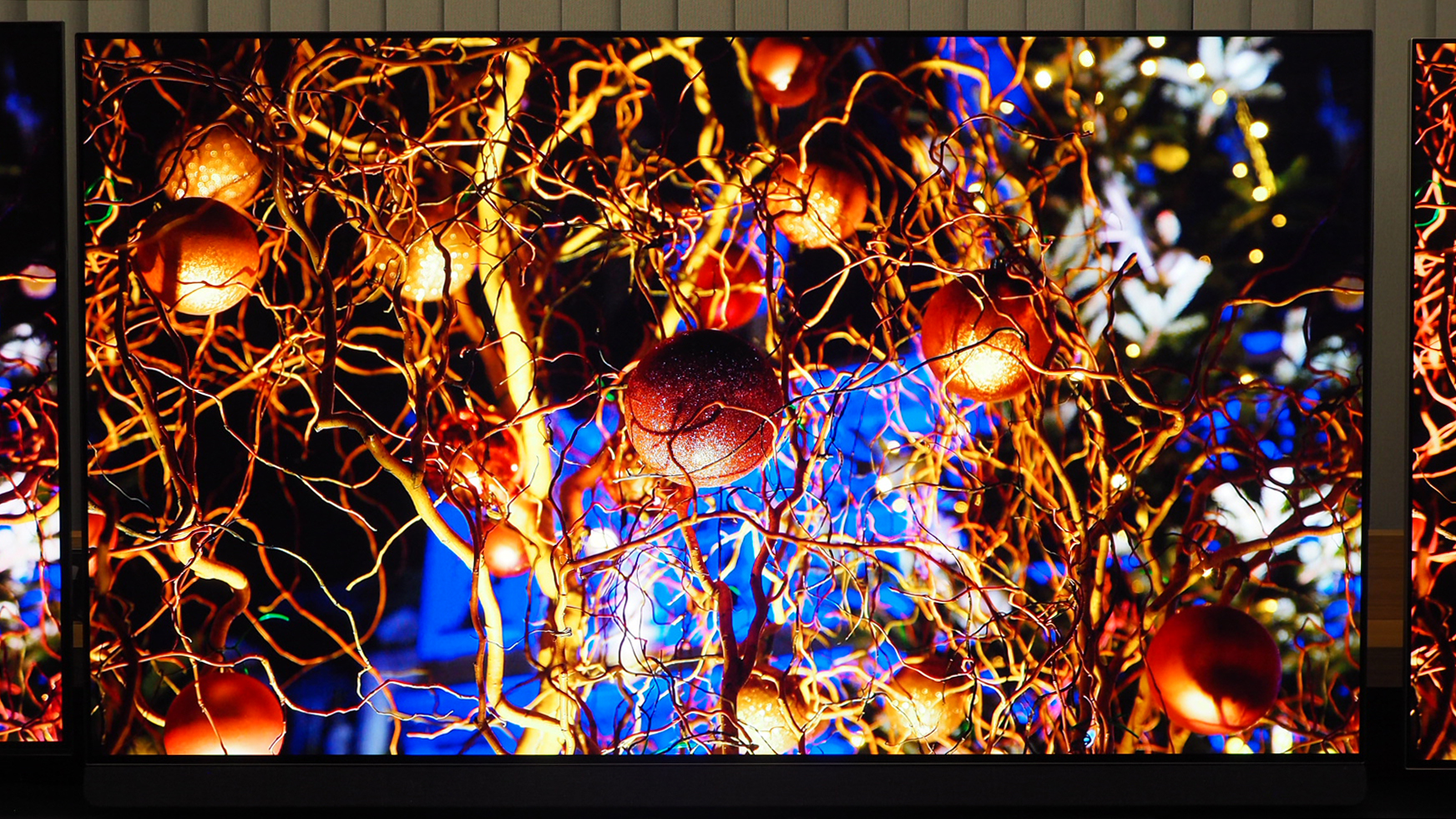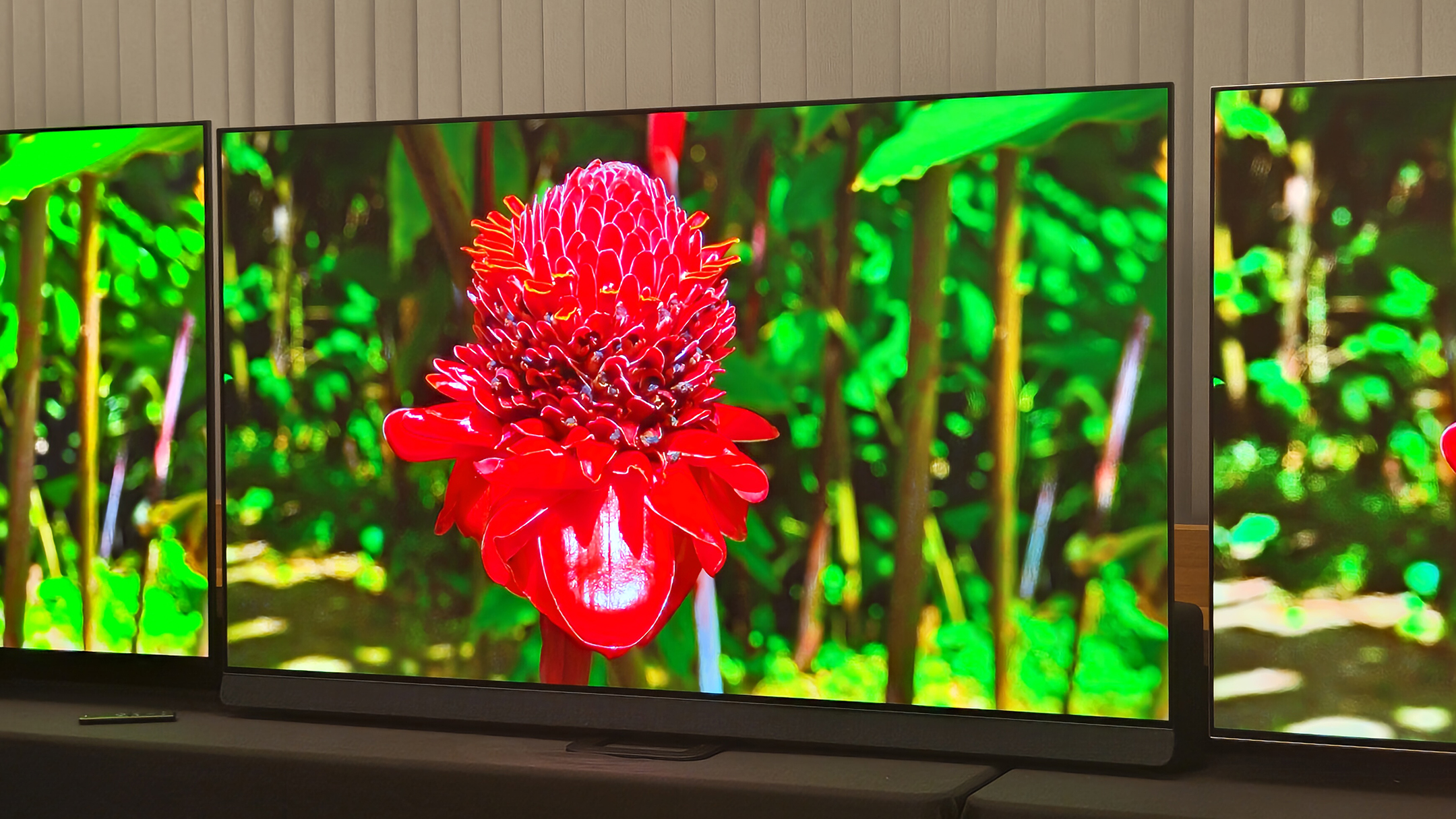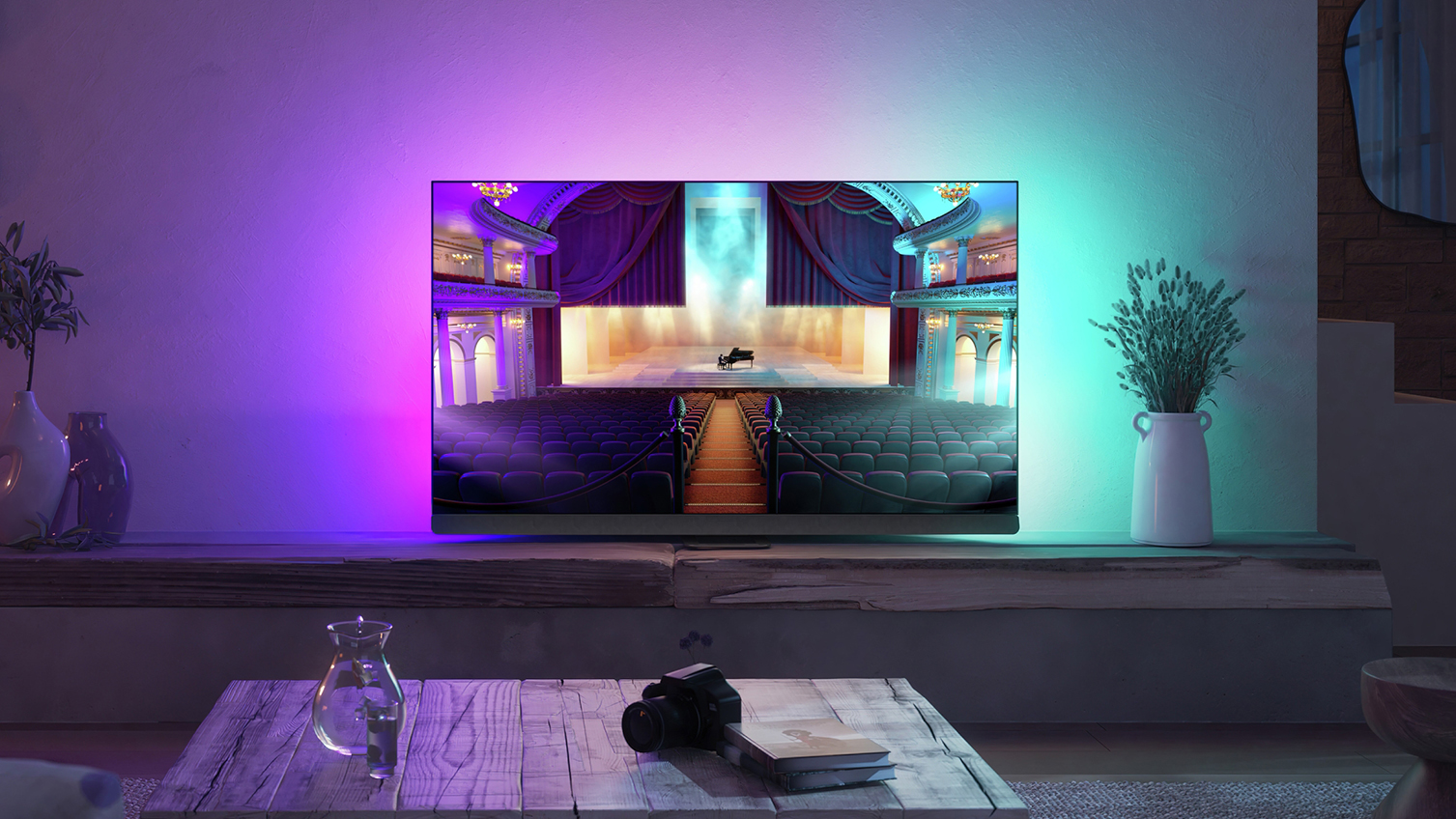
Nestled away adjacent to Barcelona's Nou Camp stadium, TP Vision - the tech brand behind Philips TVs and, under Ambilight TV, is the sleeve sponsor of FC Barcelona - presented me with its latest and greatest TV for 2023: the Philips OLED+908 (an update of the earlier OLED+907 model). And it's an ultra-bright bonanza that proves there's still a very bright future in traditional OLED TV yet.
This year is particularly special as the emergence of Micro Lens Array panels (or 'MLA' for short) has seen major successes from LG with its G3 wall-mount top-tier model, and Panasonic's MZ2000 stand-mount model (the latter with integrated Dolby Atmos speakers). I've lived with both those sets for over a fortnight apiece so can appreciate why they're easily among the best OLED TVs on the market right now. Searingly bright panels yet deft image handling make the LG, in particular, an instant favourite of mine.





Which sets the Philips OLED+908 in good stead: after all, LG provides the MLA panel to Philips, it's just the latter brand calls it a 'META OLED' panel instead and, paired with different processing engines and tuned differently, will inevitably deliver a different image. But it's no less bright, with the promise of 2100 nit peaks making it a clear contender for even QD-OLED contenders from Samsung (S95C) and Sony (A95L) alike. Which is the other reason that 2023 is a particularly special year: this rival OLED technology also promises ultra-bright images, hence MLA being such an important counter option.
So what exactly is MLA? Micro Lens Array is as it sounds: a layer of microscopic lenses that receive the self-emissive output of OLED and 'focus' the light in order for it to be more forward projecting, minimising light dissipation and resulting in a brighter image overall. The Philips OLED+908 features 42.4 billion of these lenses in its panels. Yes, billion. And while obviously I can't count such lenses (they're far too small and I'd be there forever), what I can say after seeing the Philips OLED+908 set in action is that it's oh-so bright, proving that traditional OLED hasn't lost its fight just yet. This is one neutrally balanced, clean-looking yet ultra-bright set.

But the Philips OLED+908 is so much more than that too. The thing I really love about Philips' TVs in particular is the inclusion of Ambilight technology in the high-end sets. This uses an edge-positioned stable of LED lights which project light from the rear of the TV onto surrounding walls in real-time, adapting to the on-screen image to give the illusion of a 'bigger' picture than what's just on the screen. Add to that the astonishing black levels still achieved by the 908's OLED panel and it'll be a real visual feast (I'm yet to see it in darkroom conditions, so one for my forthcoming review).
That's by no means all of the 908's plus points either: a partnership with Bowers & Wilkins results in a TV that's adorned with a spectacular speaker arrangement, here a 3.1 channel system comprised of one 75mm woofer, four 45x65mm bass radiators, two 30mm mid-range drivers with fibreglass cones, and 19mm titanium dome tweeters, delivering 81W of power total. That's very similar to the OLED+907 that came before it, except Bowers & Wilkins has tweaked and refined the implementation in the new model. I'd love to tell you how it sounds, except at this demo it was visuals only - no audio! - so I can't yet draw any verdict on that until my full review later down the line.
Anyway, back to my actual OLED+908 demonstration: Philips presented a variety of stills and moving images to show-off why the set is so adept at bright output and motion-handling in ways that QD-OLED can't always rival. Sure, the demonstration was fixed in a super-bright mode, so there was no Filmmaker Mode 'as the maker intended' or any of that, on which I can comment (yet). But it made it clear Philips has the tools to deliver visuals with gusto, just like its main rivals.
Get all the latest news, reviews, deals and buying guides on gorgeous tech, home and active products from the T3 experts

For me, having lived with the LG G3 and Panasonic MZ2000 prior, the Philips OLED+908 actually has more appeal for a number of reasons: first, it includes a stand-mount in the box, as I don't want to pay extra for the LG (which comes with wall-mount components only); second, while I love the Panasonic MZ2000's soundsystem, the Philips and Bowers & Wilkins partnership seems like the ideal solution in a less chunky set (and its earlier (and more powerful, soundbar-style arrangement) OLED+937 was phenomenal); thirdly, I'm an Ambilight advocate so that's just a major bonus for someone like me.
What it may otherwise boil down to, however, is the overall costings. Top-tier traditional OLED sets utilising MLA panels don't come cheap, especially when there are all the bells and whistles included (although only two HDMI 2.1 ports is a letdown, Philips!, but I'm glad Dolby Vision 4K at 120Hz is possible), and the OLED+908 has been priced competitively.
That's not me saying the Philips OLED+908 is 'budget' or 'cheap' by any measure though: the 55-inch model is £2999 in the UK; the 65-inch is a more agreeable £3499; while the gigantic 77-inch model is £4999. Not small change, I know, but a TV like this, from what I've seen so far, will never leave you feeling small-changed in any way. TP Vision is onto a major winner here, one that's been worth waiting for (its Freeview Play absence largely forgiven) and, while a less obvious pick than LG's G3 OLED, is arguably the smarter choice overall...

Mike is T3's Tech Editor. He's been writing about consumer technology for 15 years and his beat covers phones – of which he's seen hundreds of handsets over the years – laptops, gaming, TV & audio, and more. There's little consumer tech he's not had a hand at trying, and with extensive commissioning and editing experience, he knows the industry inside out. As the former Reviews Editor at Pocket-lint for 10 years where he furthered his knowledge and expertise, whilst writing about literally thousands of products, he's also provided work for publications such as Wired, The Guardian, Metro, and more.
